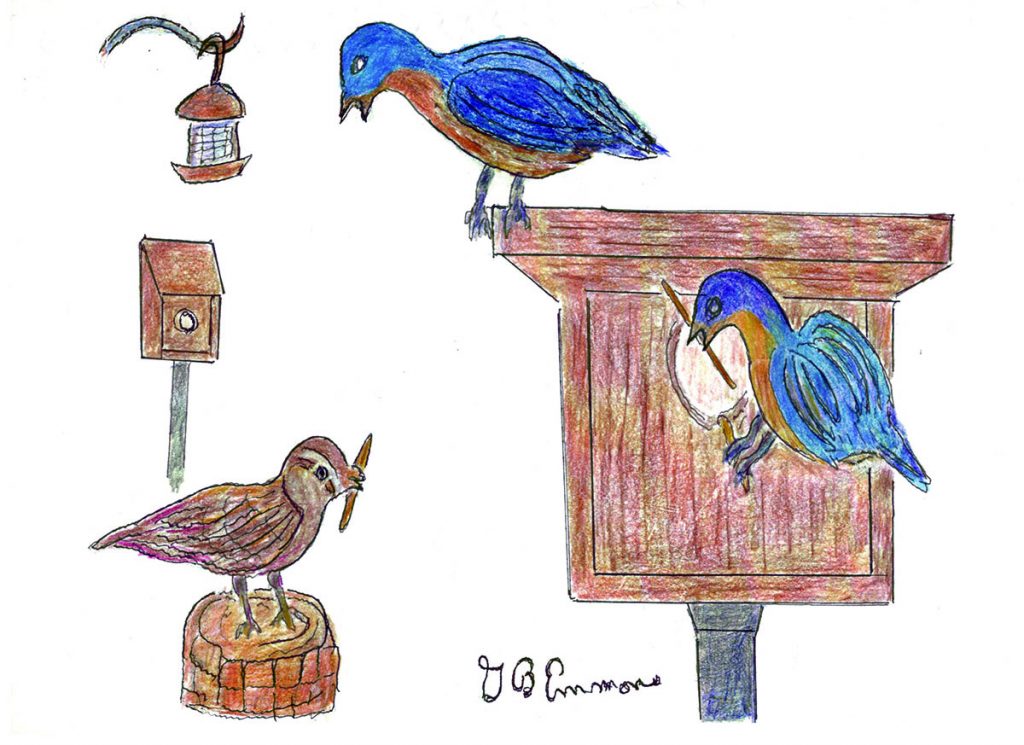Nearly eliminated from SouthCoast bird-watching pleasure due to lack of natural nesting cavities available, the Bluebird has made a remarkable comeback with the aid and support of local Audubon Society efforts, as well as supervising avid birdwatchers on how to build hundreds of nesting boxes with great success. This avian symbol of happiness can also be attracted to a shallow dish of bird feeder filled with mealworms, also available at most bird feeder stores. Males return here first often to last year’s nest, followed by the female, with a mouth full of pine needles, to furnish decoration for moving in.
The successive reproduction in the same nest is advantageous because, when the spring fledglings are still there when the second are hatched, they will often help their elders catch insects to feed the next generation. And when it is time to migrate, they congregate all together to find and then share a winter box to share together.
Bluebirds prefer nest-box locations in a forest clearing or semi-open country with scattered trees, big yards, orchards or hedgerows near open fields. Placement of more than one is advised if more than 300 feet apart. Hopefully the second will be taken by Tree Swallows, which are often very aggressively territorial to scare away Sparrows who will sneak into the Bluebird nest, as illustrated.
The song of the Bluebird in spring is a soft, agreeable warble during the love season, with a quivering of wings similar in form and intention of the Robin Red Breast of jolly old England.
As they said at the end of World War II, “There will be Bluebirds over the White Cliffs of Dover, tomorrow just you wait and see.” For you as a nest-box volunteer, hopefully your reward will be Bluebirds over fields of your own, with the satisfaction of bringing happiness on wings of spring to your neighborhood.
George B. Emmons
